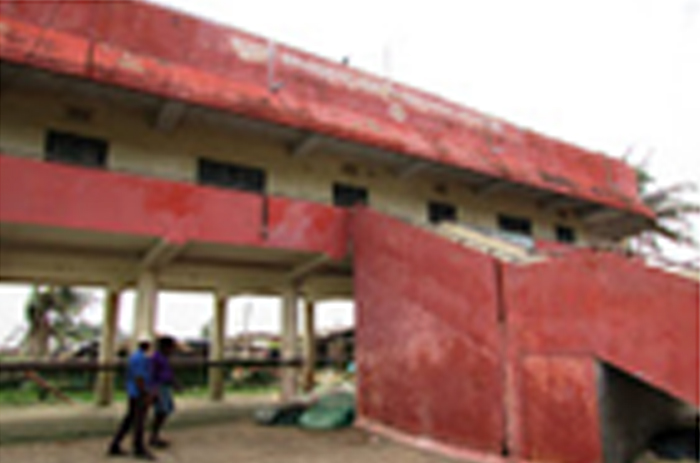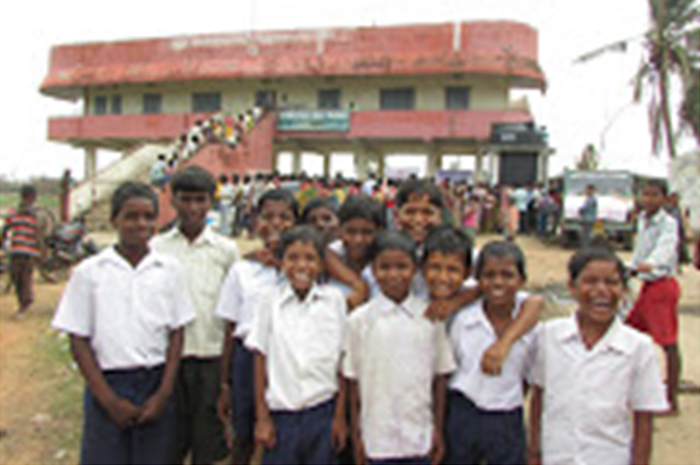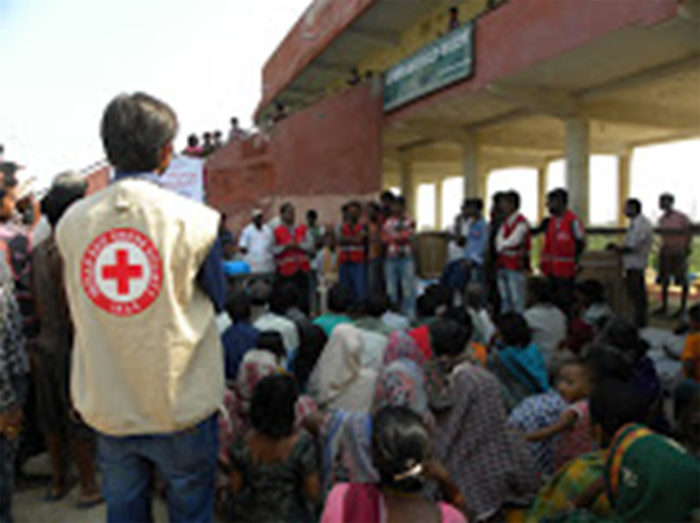
IRCS cyclone shelter in Gokharkuda & Khurantuha in Odisha being awarded “Best shelter Maintenance and Management Committee”
by Dr Naveen Patnaik, Chief Minister of Orissa
The IRCS multipurpose cyclone shelter committee at Gokharkuda & Khurantuha was adjudged as the best Shelter Maintenance and Management Committee at a state level exhibition on the occasion of observance of the state Disaster Preparedness Day in Odisha on the 29th of October, 2013. This shelter is one of the 59 Shelters that were constructed and completed in the year 2009 by the Indian Red Cross Society in collaboration with the Government of Germany, KFW(German Development Bank) and the German Red Cross under the Orissa disaster Mitigation programme (ODMP I&II).

IROne of the 75 multi-purpose cyclone shelters in Odisha managed by the IRCS
The Indian Red Cross Society is managing 75
multi-purpose cyclone shelters. Red Cross volunteers assisted in evacuation of more than 2,00,000 people during Cyclone Phailin, out of whom 1, 14, 400 Cyclone Phailin affected people are housed in theses shelters. The Government of Odisha has now requested the Odisha Red Cross state branch to consider making more such shelters.
Odisha has a 480 km long coastline stretching over 6 districts of Balsore,Bhadrak, Kendrapara, Jagatsingpur, Puri and Ganjam. On an average every 5 years, a major cyclone and almost every year several cyclones of minor intensity strike the coast accompanied by high speed winds, tidal waves and floods. There was a need to construct state of the art cyclone shelters which would cater to the needs of the affected population.

In between disasters, the cyclone shelters are used for various community activities
The 23 shelters built under ODMP I find a mention in the World Disaster Report 2001 released in Geneva, for having been able to save more than 40,000 lives during the super cyclone of 1999 alone.
The Indian Red Cross Society continues to support the multi-purpose cyclone shelters built under ODMP I & II, even after construction. Post programme support is still being provided by IRCS in order to train communities for preparedness and Disaster Risk Reduction (DRR) activity during inter-disaster periods. In between disasters, these shelters are also used for various activities for the community, like primary schools, crèches etc.

30-40 member community committee manages the cyclone shelters
Red Cross has trained communities in the vicinity of cyclone shelters in first aid, search and rescue, disaster preparedness, management of cyclone shelters etc. Every cyclone shelter has a task force trained in first aid, search & rescue and a 30-40 community members committee manages these multi-purpose cyclone shelters.
Each committee has been provided with search and rescue equipment. In the cyclone shelters which were constructed in ODMP II, there are separate living areas for men and women and separate toilets as well. All cyclone shelters have rain water harvesting system installed which ensures supply of water to the people in the shelters. A hand pump is provided in each cyclone shelter to lift water from collection tank to the second floor.

Red Cross volunteers to the aid of the affected population
It is this resilience building exercise that came to the fore in Odisha, as the cyclone subsided and floods wreaked more havoc in several districts of Odisha Red Cross teams were there for the affected populace. The Red Cross volunteers helped in the evacuation of 1.8 lakh people during the floods and assisted them with drinking water, shelter and other urgent needs. Yet the journey to total rehabilitation seems long and arduous, as livelihoods have been lost not to mention roofs over heads. |